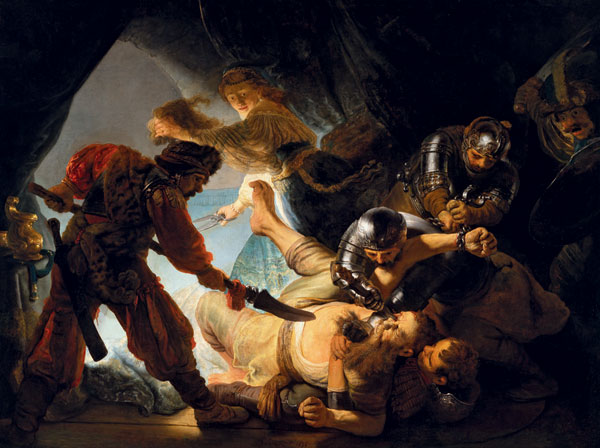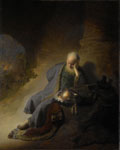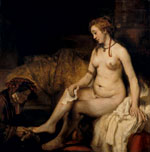Among the great masters of northern European painting, Rembrandt (Leyden 1606 – Amsterdam 1669) is one of the least represented in Spanish collections, including that of the Prado, which only has one autograph work by the artist, Artemisia of 1634. For this reason the Museum has decided to organise an exhibition that will allow the public to come closer to the work of this remarkable Dutch artist, considered one of the greatest painters in western art. The Prado has benefited from the generous collaboration of museums and collections around the world.
The European Renaissance tradition
Comprising around 35 paintings and 5 prints loaned by 20 European and US museums and collections, the exhibition, which is sponsored by BBVA, will focus on the figure of Rembrandt as a narrative painter. While he was also a great portrait and landscape painter, Rembrandt’s activities as a history painter demonstrate in a particularly clear way how his art derives from the European Renaissance tradition, while also revealing its originality. It is precisely this aspect of Rembrandt’s art that best connects and also contrasts with the pictorial tradition represented by the Prado. It will consequently be interesting to see his works alongside those of the various artists who were his principal sources of inspiration, particularly Titian and Rubens, and to compare his response to these sources to those of Velázquez in the same museum, who was also indebted to the same tradition.
Jeremiah lamenting the Destruction of Jerusalem, oil on panel, 58,3 x 46,6 cm, 1630, Amsterdam, Rijksmuseum
From joviality to gravity
The exhibition, on display in rooms A and B of the new building in the Museum’s extension, is arranged chronologically. It presents Rembrandt as a painter of subjects derived from history, religion and classical mythology. With the aim of helping the visitor to appreciate Rembrandt’s unique viewpoint on these themes that reflected his vision of the world, the exhibition covers all the various phases of his career. As a young artist Rembrandt focused on the external manifestation of human emotions and sentiments, expressed through highly animated gestures and expressions. During these years his perspective on the world was frequently mocking and jovial. From around 1645 a change in his manner of seeing the world and understanding life is evident in his work. The paintings executed from that date onwards reveal a more interiorised sentiment, imbued with more gravity and conveying a moving sense of moral weight. These are among Rembrandt’s most original works.
A display of major works
Among his early works in the exhibition, a particularly notable example is Saint Peter and Saint Paul loaned by the National Gallery of Victoria in Melbourne. Also present are various works from the artist’s mature phase such as the monumental Samson and Delilah from the Städel Museum in Frankfurt. The artist’s most personal phase, corresponding to his late years up to his death in 1669, is represented by various works characteristic of that period including one of his most important late paintings, the Bathsheba from the Musée du Louvre. The exhibition ends with Self-portrait as Zeuxis from the Wallraf-Richartz Museum-Fondation Corboud in Cologne, painted only five or six years before the artist’s death and the last of the self-portraits by a painter particularly obsessed with the representation of his own image. The exhibition also includes his Self-portrait in Oriental Dress, loaned from the Petit Palais in Paris and painted in 1631 when Rembrandt was 25. His depiction of himself as Zeuxis, the famous 5th-century BC Greek painter who according to legend died of laughter while painting an old lady, explains the artist’s comic smile in this image of himself aged almost 60.
Bathsheba, oil on canvas, 142 x 142 cm, 1654, Paris, Musée du Louvre
| 



